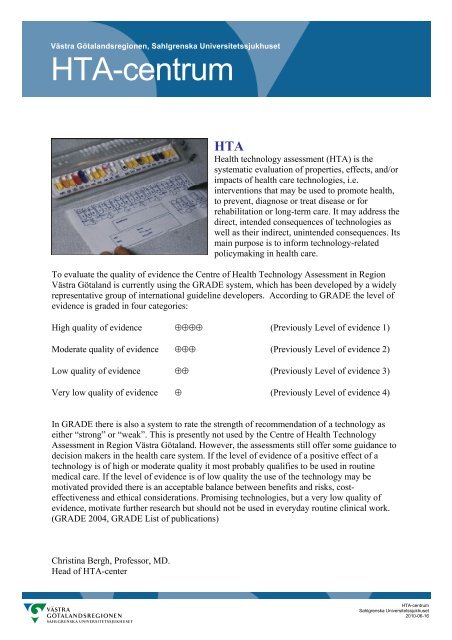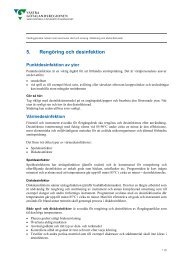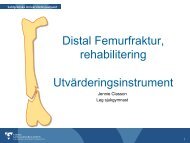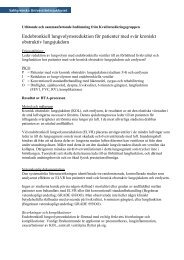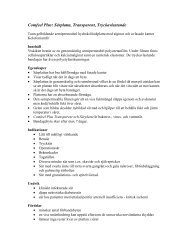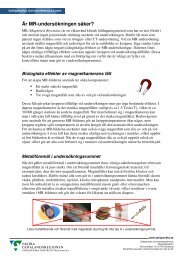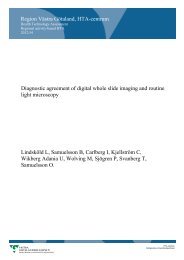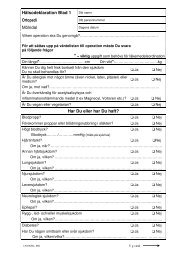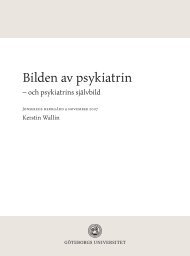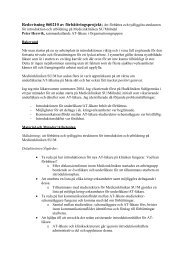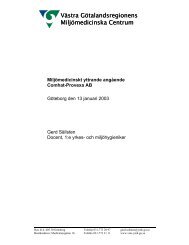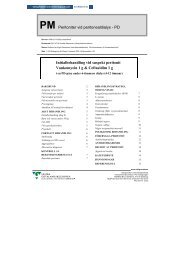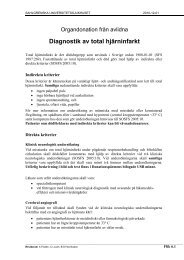M Rizell, R Hultborn, P Bernhardt, J Svensson, M Sternby Eilard, O ...
M Rizell, R Hultborn, P Bernhardt, J Svensson, M Sternby Eilard, O ...
M Rizell, R Hultborn, P Bernhardt, J Svensson, M Sternby Eilard, O ...
You also want an ePaper? Increase the reach of your titles
YUMPU automatically turns print PDFs into web optimized ePapers that Google loves.
Västra Götalandsregionen, Sahlgrenska Universitetssjukhuset<br />
HTA-centrum<br />
HTA<br />
Health technology assessment (HTA) is the<br />
systematic evaluation of properties, effects, and/or<br />
impacts of health care technologies, i.e.<br />
interventions that may be used to promote health,<br />
to prevent, diagnose or treat disease or for<br />
rehabilitation or long-term care. It may address the<br />
direct, intended consequences of technologies as<br />
well as their indirect, unintended consequences. Its<br />
main purpose is to inform technology-related<br />
policymaking in health care.<br />
To evaluate the quality of evidence the Centre of Health Technology Assessment in Region<br />
Västra Götaland is currently using the GRADE system, which has been developed by a widely<br />
representative group of international guideline developers. According to GRADE the level of<br />
evidence is graded in four categories:<br />
High quality of evidence ⊕⊕⊕⊕ (Previously Level of evidence 1)<br />
Moderate quality of evidence ⊕⊕⊕ (Previously Level of evidence 2)<br />
Low quality of evidence ⊕⊕ (Previously Level of evidence 3)<br />
Very low quality of evidence ⊕ (Previously Level of evidence 4)<br />
In GRADE there is also a system to rate the strength of recommendation of a technology as<br />
either “strong” or “weak”. This is presently not used by the Centre of Health Technology<br />
Assessment in Region Västra Götaland. However, the assessments still offer some guidance to<br />
decision makers in the health care system. If the level of evidence of a positive effect of a<br />
technology is of high or moderate quality it most probably qualifies to be used in routine<br />
medical care. If the level of evidence is of low quality the use of the technology may be<br />
motivated provided there is an acceptable balance between benefits and risks, costeffectiveness<br />
and ethical considerations. Promising technologies, but a very low quality of<br />
evidence, motivate further research but should not be used in everyday routine clinical work.<br />
(GRADE 2004, GRADE List of publications)<br />
Christina Bergh, Professor, MD.<br />
Head of HTA-center<br />
HTA-centrum<br />
Sahlgrenska Universitetssjukhuset<br />
2010-06-16


